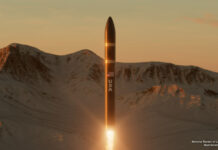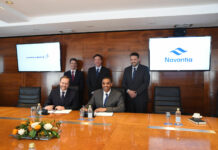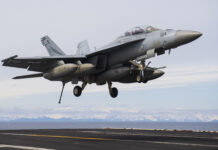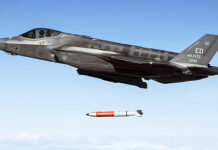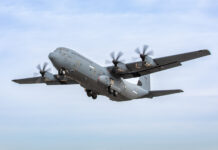The US Navy awarded separate contracts to Raytheon Missiles & Defense and Lockheed Martin on 27 March 2023 for the initial development for a carrier- suitable long-range, high-speed missile designated the Hypersonic Air-Launched Offensive Anti-Surface Warfare missile (HALO), Naval Air Systems Command (NAVAIR) announced the following day.
The contracts, valued at a total of USD 116 M (EUR 107 M), are the first step to fielding what NAVAIR called “a critical capability over the next decade that will address advanced threats and allow the US Navy to operate in and control contested battlespace in littoral waters and anti-access/area denial (A2/AD) environments”.
The initial contracts to Raytheon and Lockheed Martin will provide technical maturation and development through preliminary design review of the propulsion system required for a carrier-suitable air-launched hypersonic weapon. The contract period of performance for the awards will end in December 2024, with each company’s preliminary design review working towards a prototype flight test.

HALO is what was previously known as Offensive Anti-Surface Warfare Increment 2 (OASuW Inc 2), with OASuW Increment 1 being the existing subsonic AGM-158C Long-Range Anti-Ship Missile (LRASM), which is currently fielded on the US Navy F/A-18E/F Super Hornet fighters and US Air Force B-1B bombers. To bridge the gap until HALO is operational, the navy recently funded an upgrade to LRASM that will incorporate missile hardware and software improvements to enhance targeting capabilities.
“As threat capability continues to advance, additional range, warfare capability and capacity is required to address the more demanding threat environment,” Captain Richard Gensley, Precision Strike Weapons (PMA-201) programme manager, was quoted as saying by NAVAIR.
The HALO programme is part of the navy’s Long Range Fires investment approach to meet objectives of the National Defense Strategy where hypersonic weapons are a top priority, said Capt Gensley.
“Our team is leveraging science and technology and rapid prototyping arenas to support aggressive schedule execution,” he added.
The contracts awarded to Raytheon and Lockheed Martin are the first of potentially additional development and production contracts based on initial designs and supplier performance that will inform US Navy leadership on future programme decisions. The navy plans to pursue a competitive acquisition strategy leveraging LRASM’s requirements and concept of operations to meet future maritime threats beyond the mid-2020s.
An initial operational capability for HALO is planned to be fielded late this decade.
Peter Felstead



